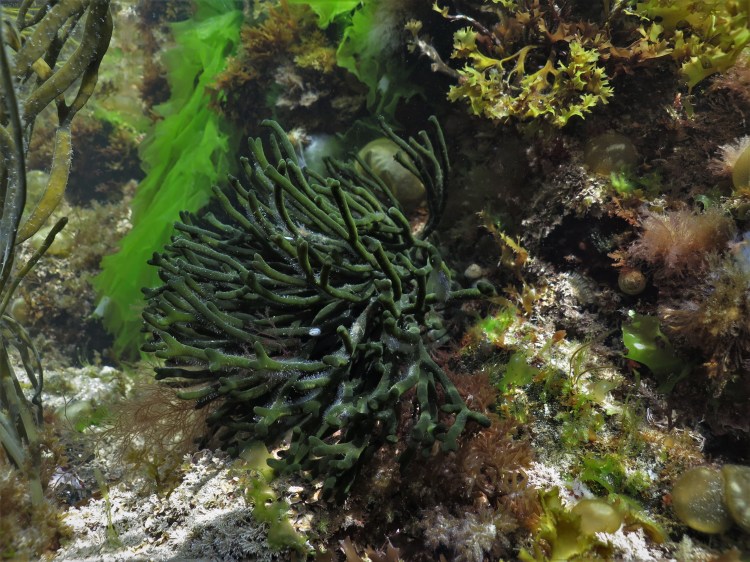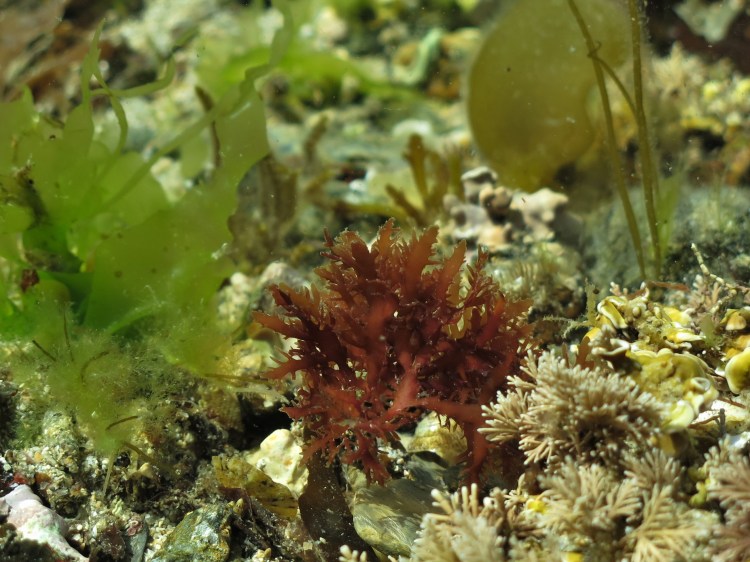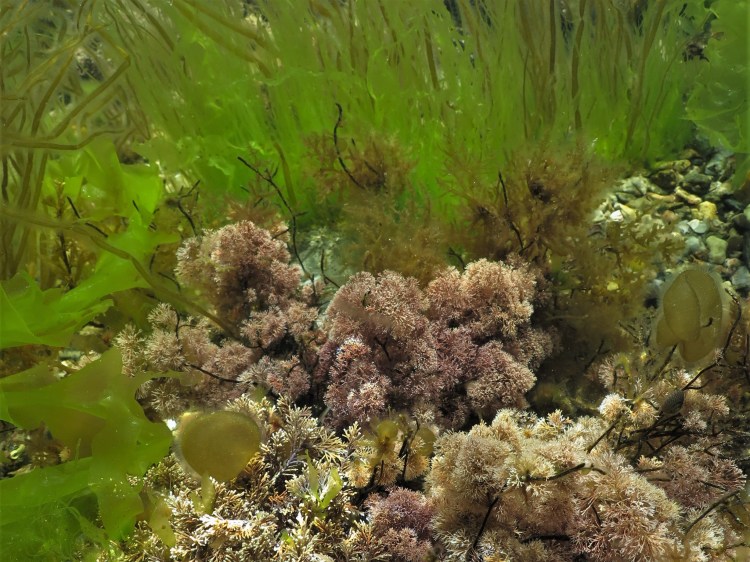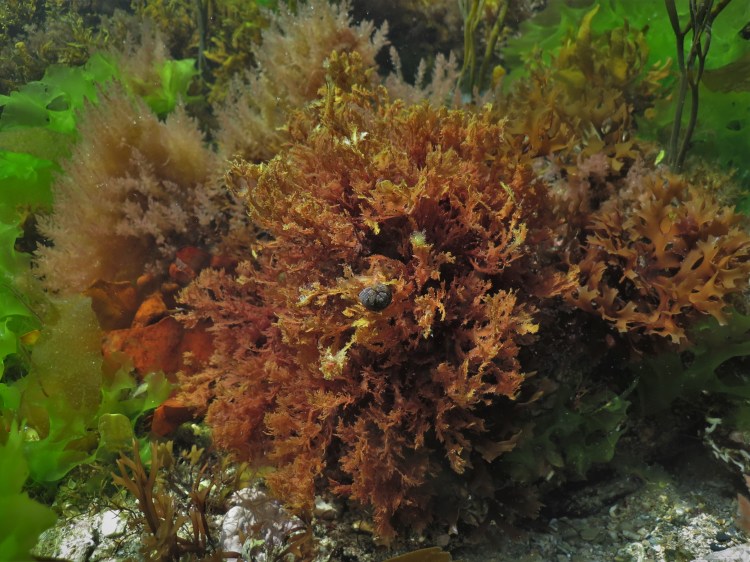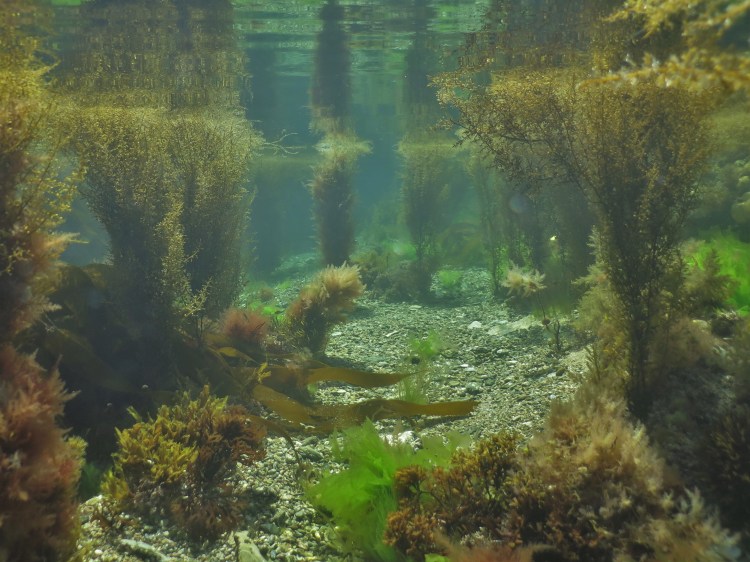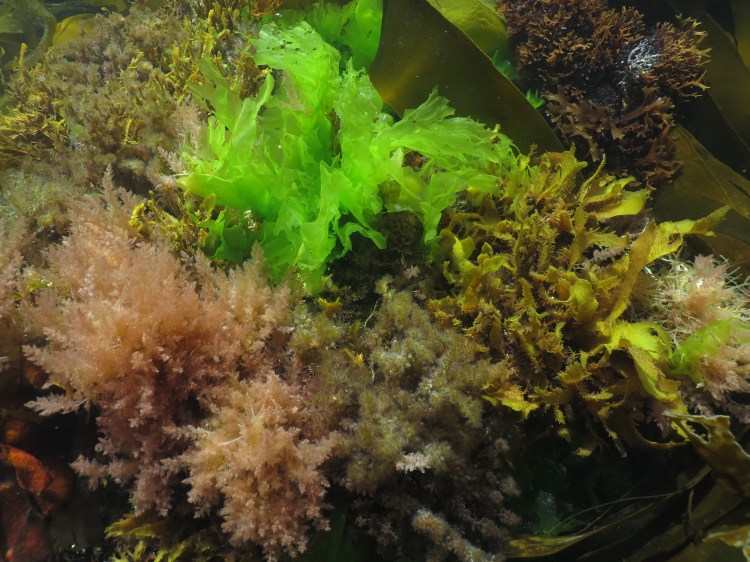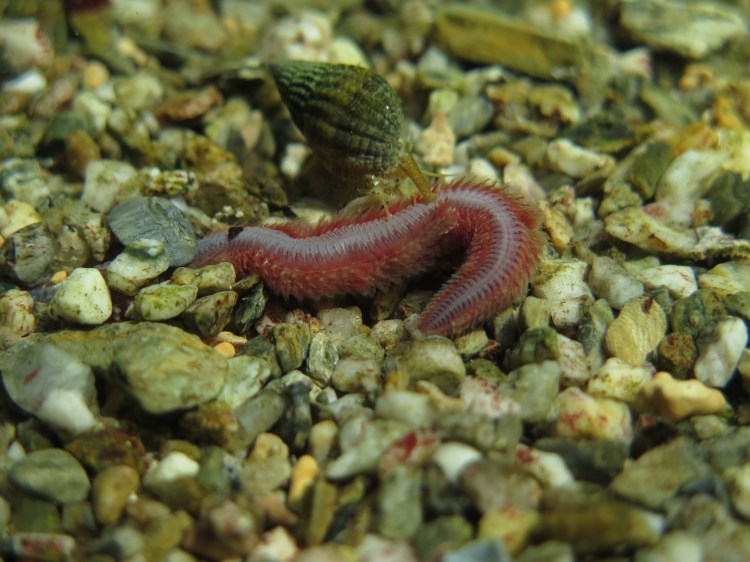The sun is shining (most days) and the water has warmed up, so ideal conditions for a bit of snorkeling. I have been out at my usual spot in Falmouth (rockpools and kelp forest) and my local beach in Flushing (seagrass) (and yes, I really count myself lucky every time that l live here!). The last couple of times I have brought my son along, as he is now old enough (nine). He is a nature freak just like his dad, actually probably more so! I need to get him fins and a weight belt soon, but he has been doing fine in the water already.
The photos above and below illustrate the state of the rock pools at the moment: quite brownish with the Sargassum and Himanthalia growing everywhere. The red, pink and purple species have largely disappeared (apart from Harpoon weed) and there is quite a bit of green Ulva growing. The water teems with juvenile pollack in the rock pools and schools of sand eels a bit further out. Diving over sandy patches, you can see the latter species shooting out of the sand en masse. It is crazy how such a silvery pelagic fish can also burrow in the sand. I guess it does take its toll, as there are quite some dead ones to be seen too.
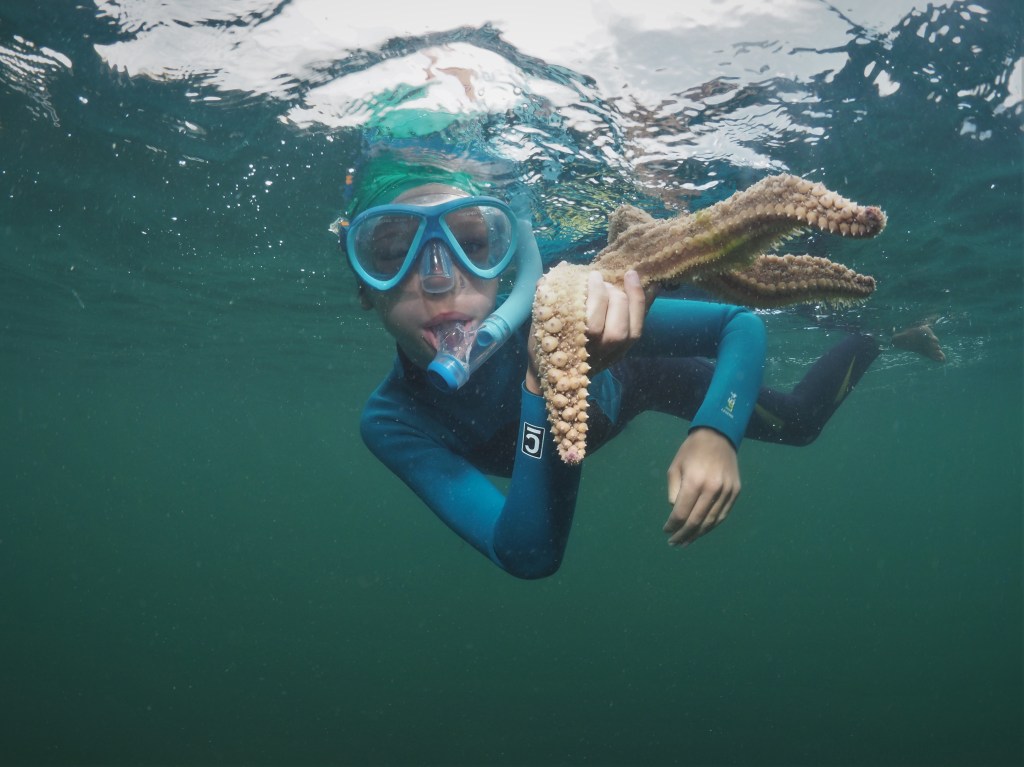
The Flushing snorkel site is very different, no (deep) rockpools, only a little bit of kelp but with a very healthy patch of seagrass. No catsharks or thornback rays when we went in, just the odd small sea bass. There are many small Snakelocks anemones on the seagrass. I used to think that it was mostly the purple form that did this but I now noticed that most were the green variety, so the morphs do not seem to differ in this respect after all. One anemone had ‘caught’ a crystal jellyfish (an Aequorea medusa). Not sure if it was in the process of being digested or just ‘stuck’.


I have played around with my new INON strobe, which works a lot better than my old strobe. I have ordered a second one for Wide Angle photos too….(as you can see there is quite some backscatter in the pic of the Shore Crab above). I will need to get back to some shore diving to make optimal use of two strobes, as I am too lousy a freediver to get the lighting and exposure right in one breath!




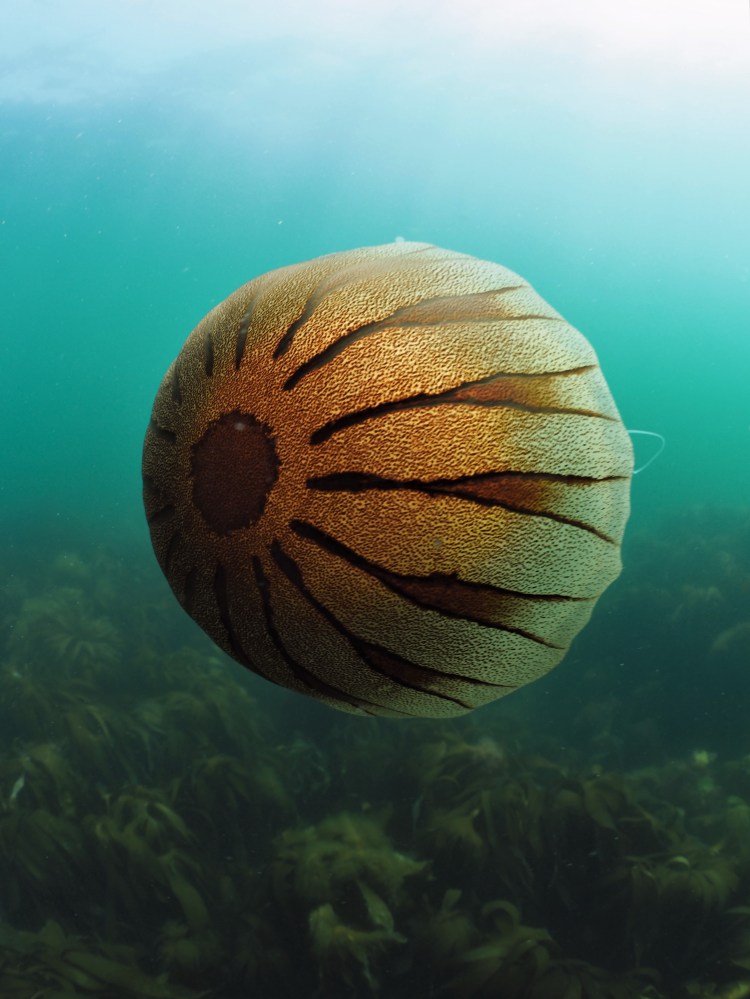



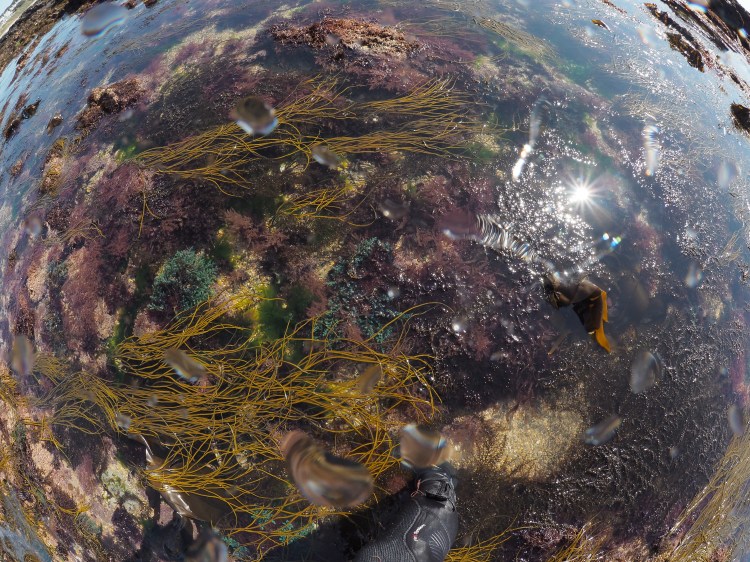


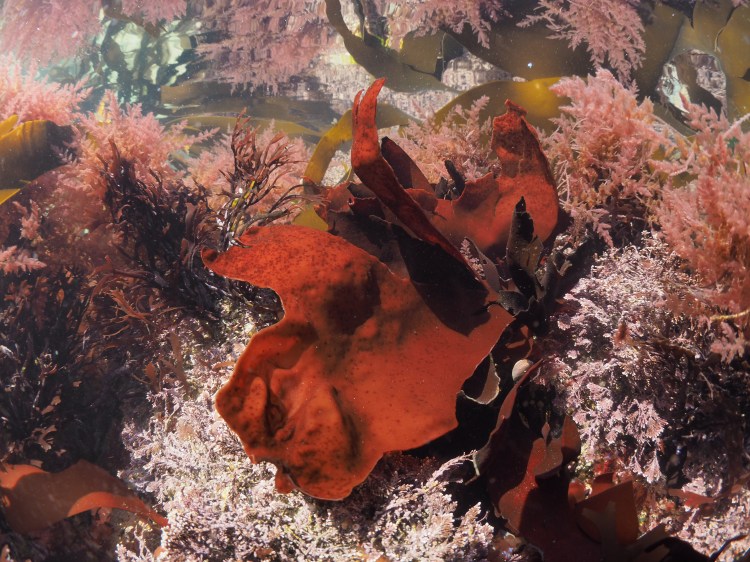
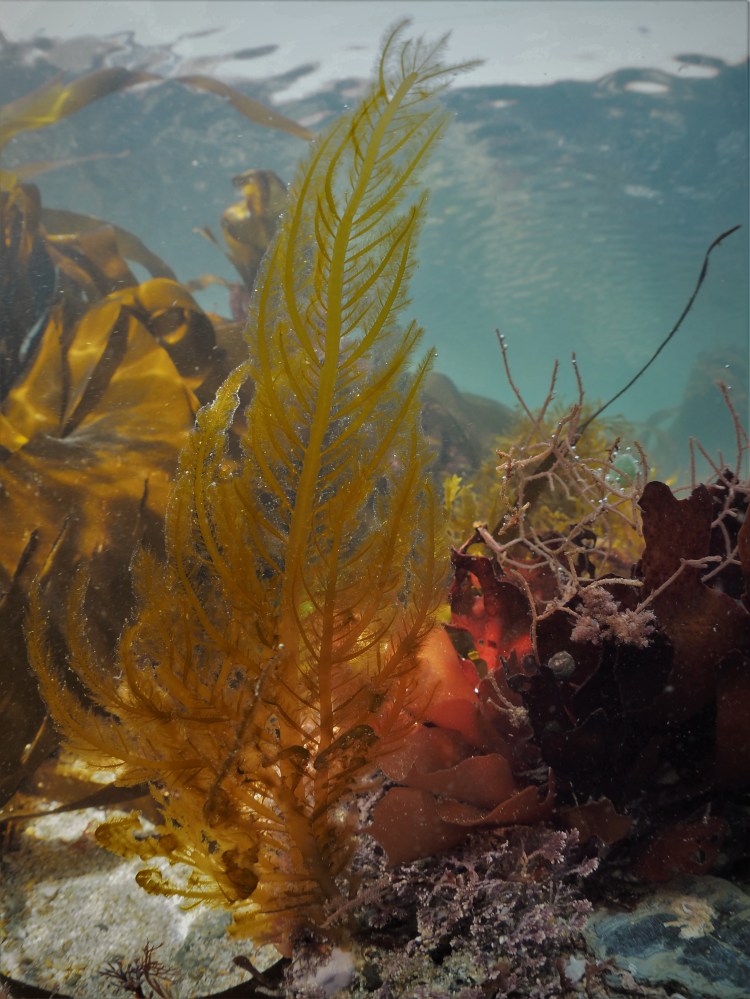
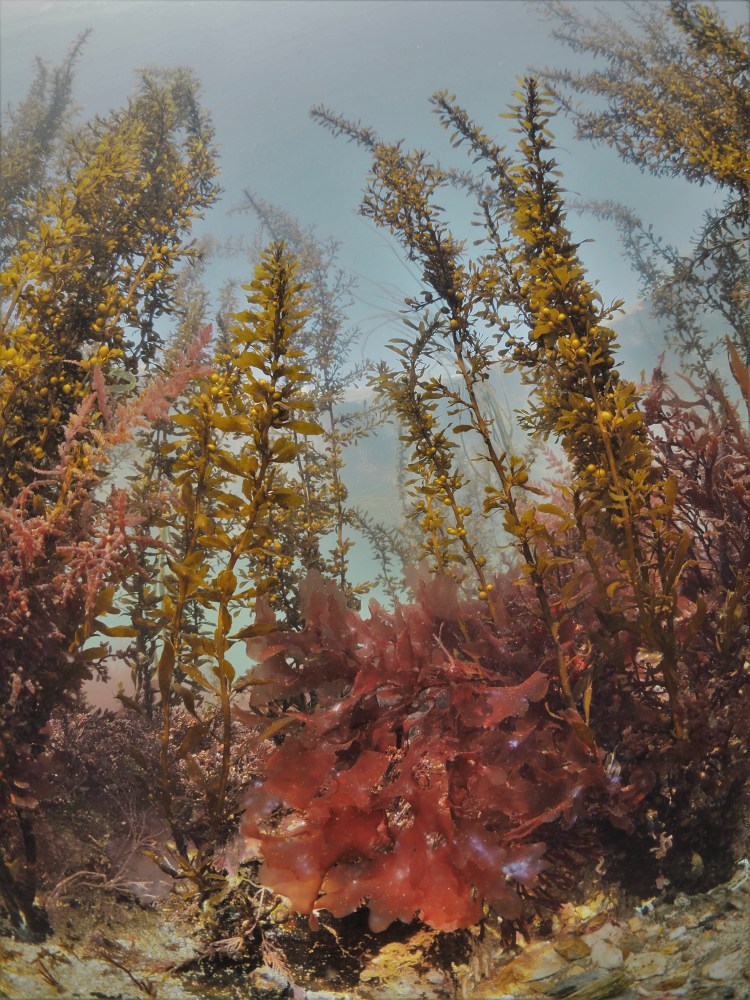


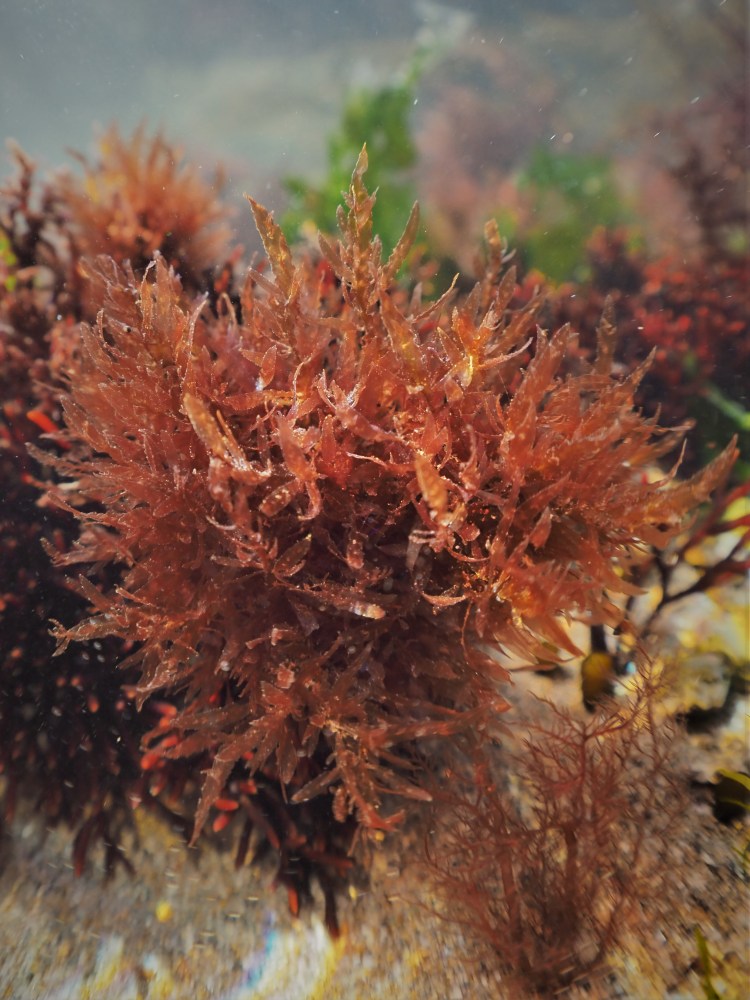
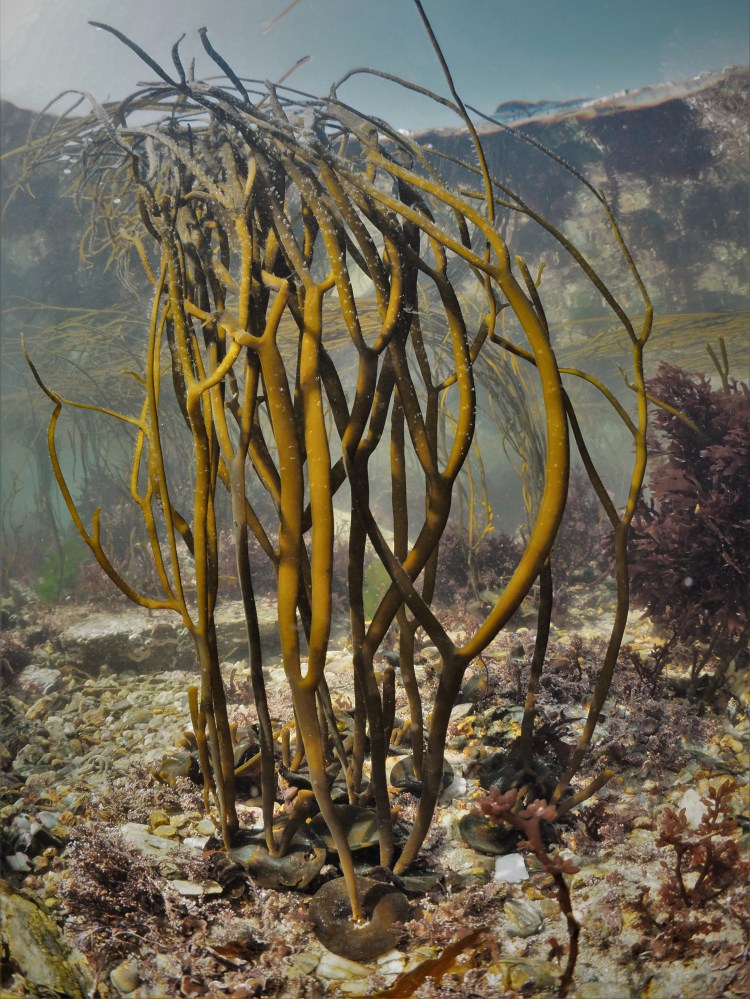
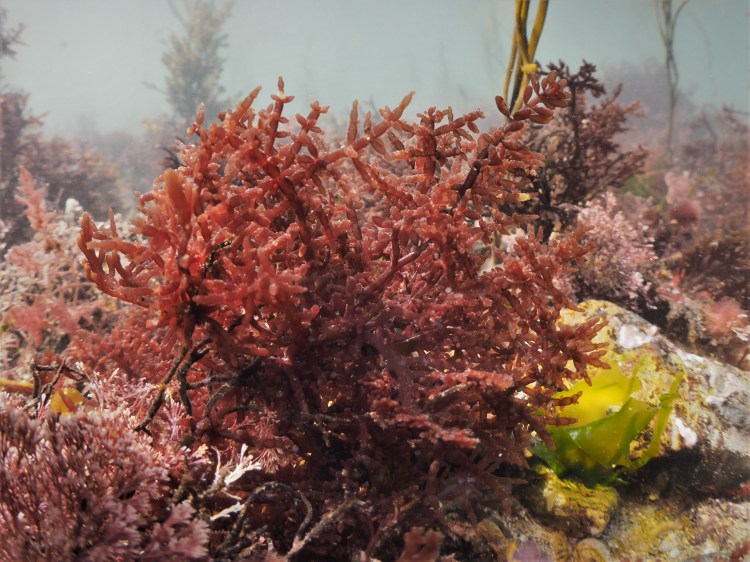
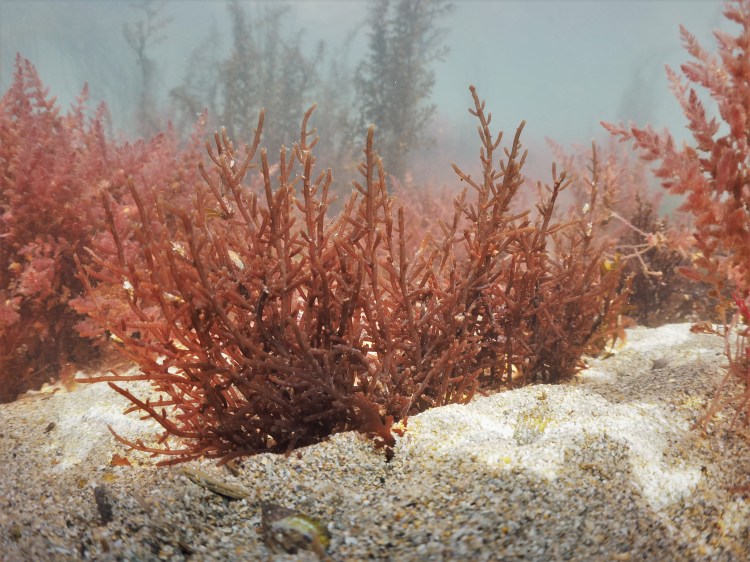



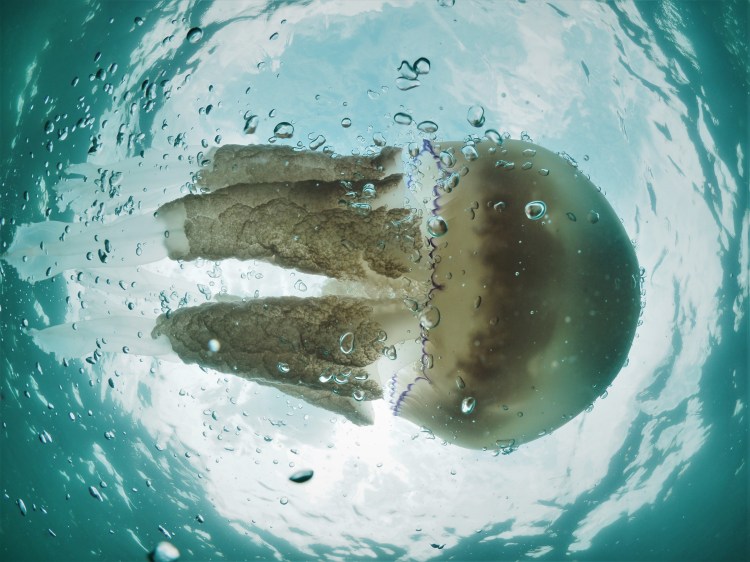
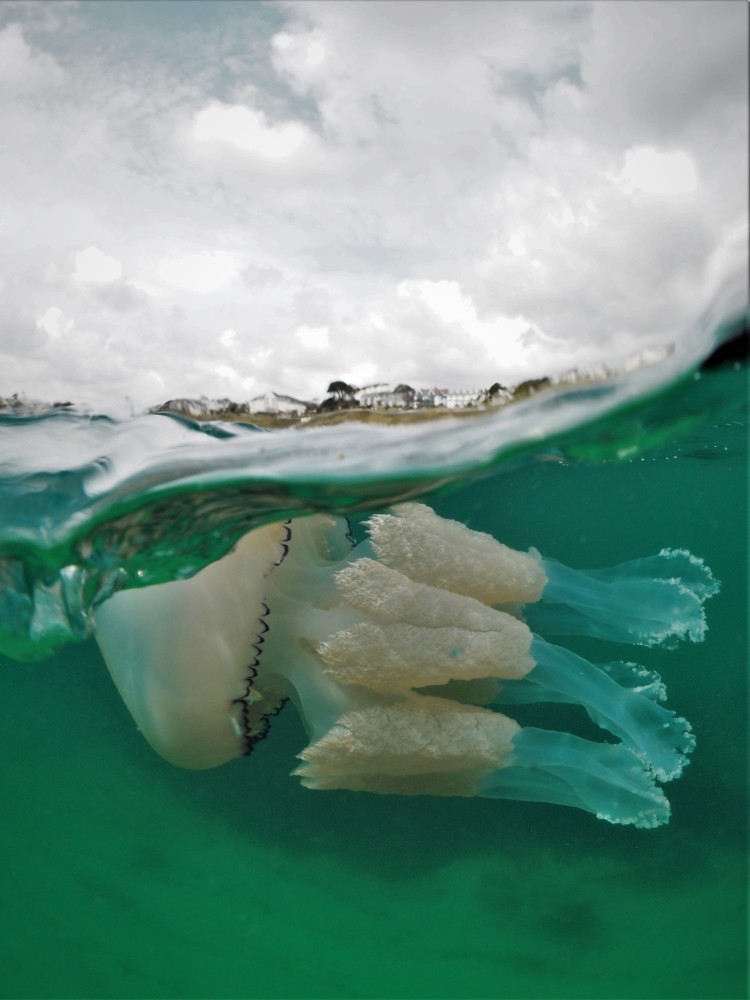






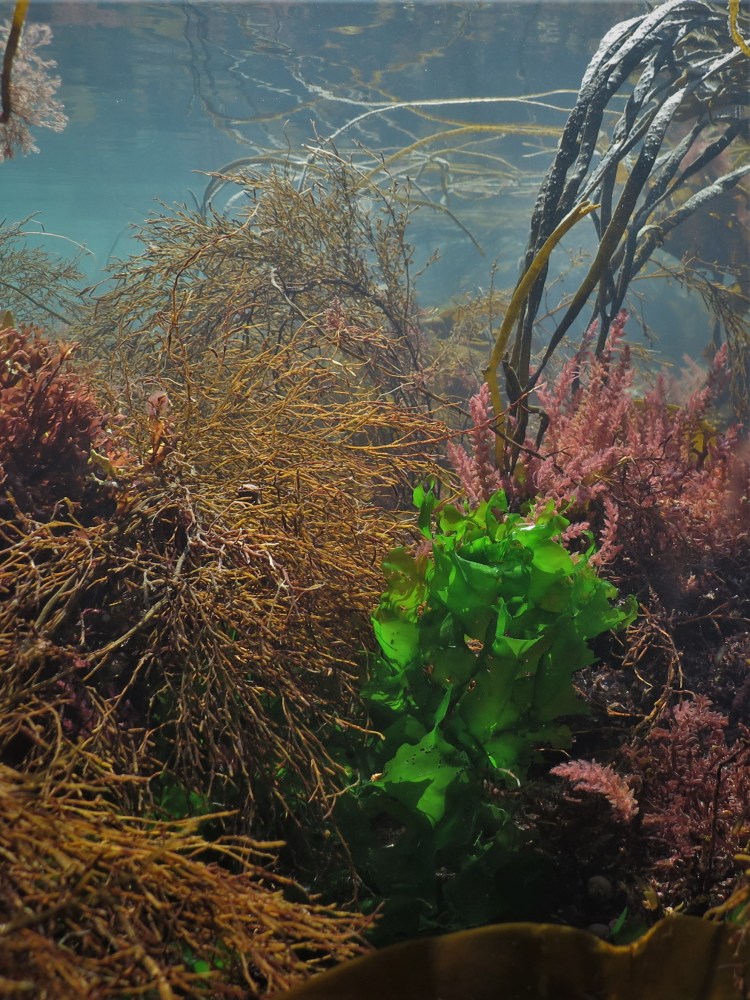


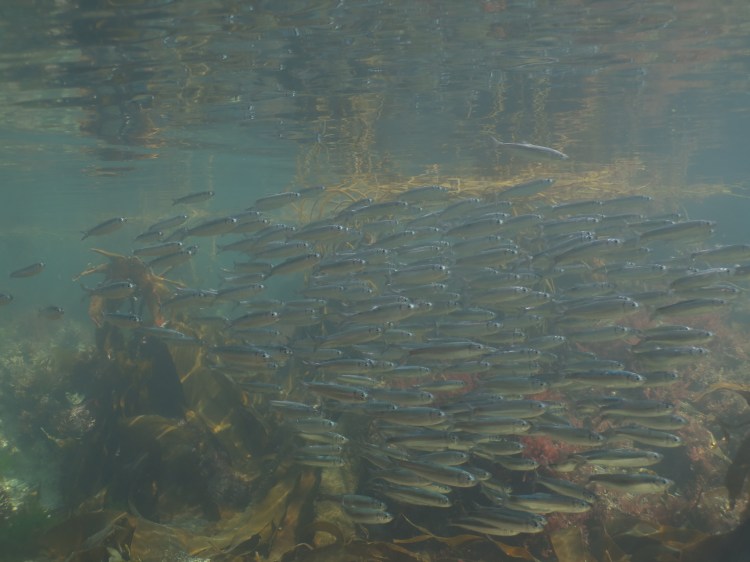


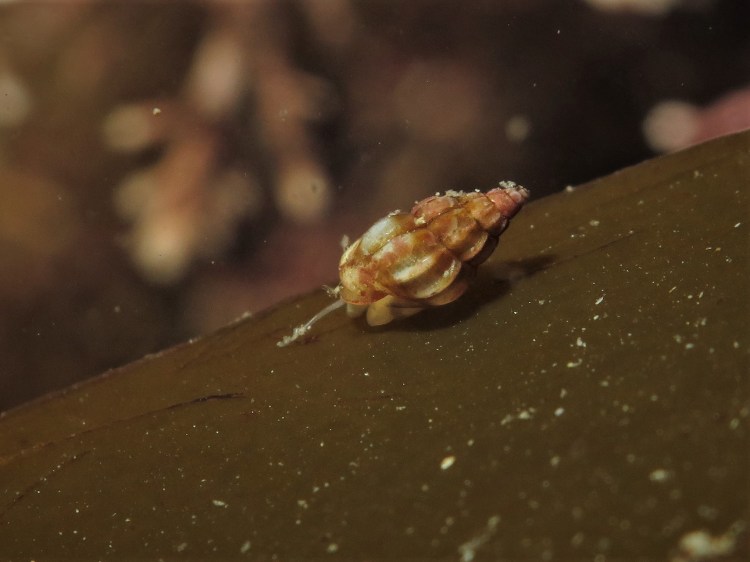




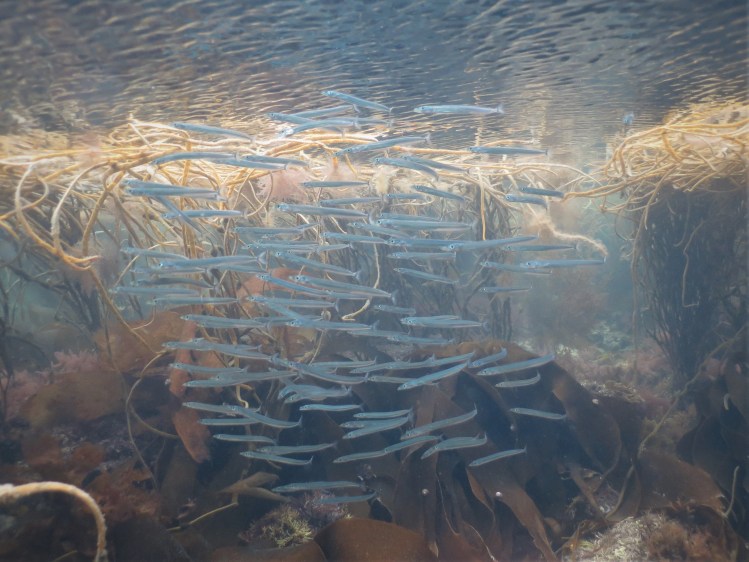

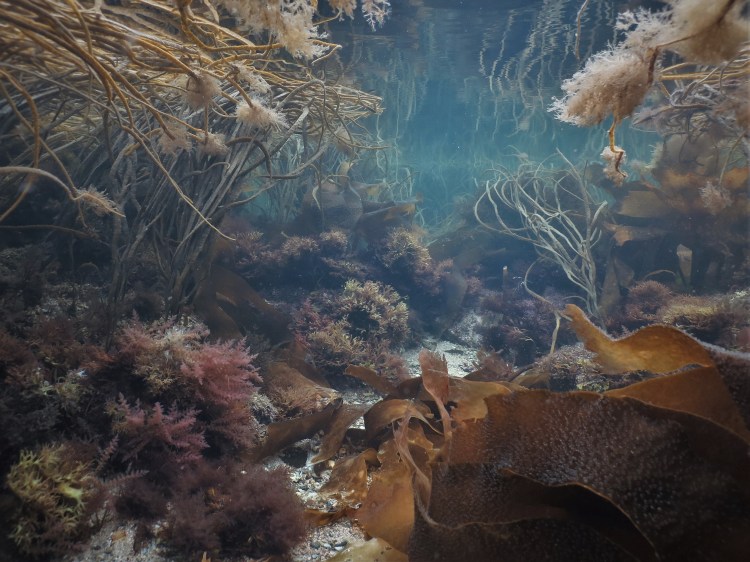


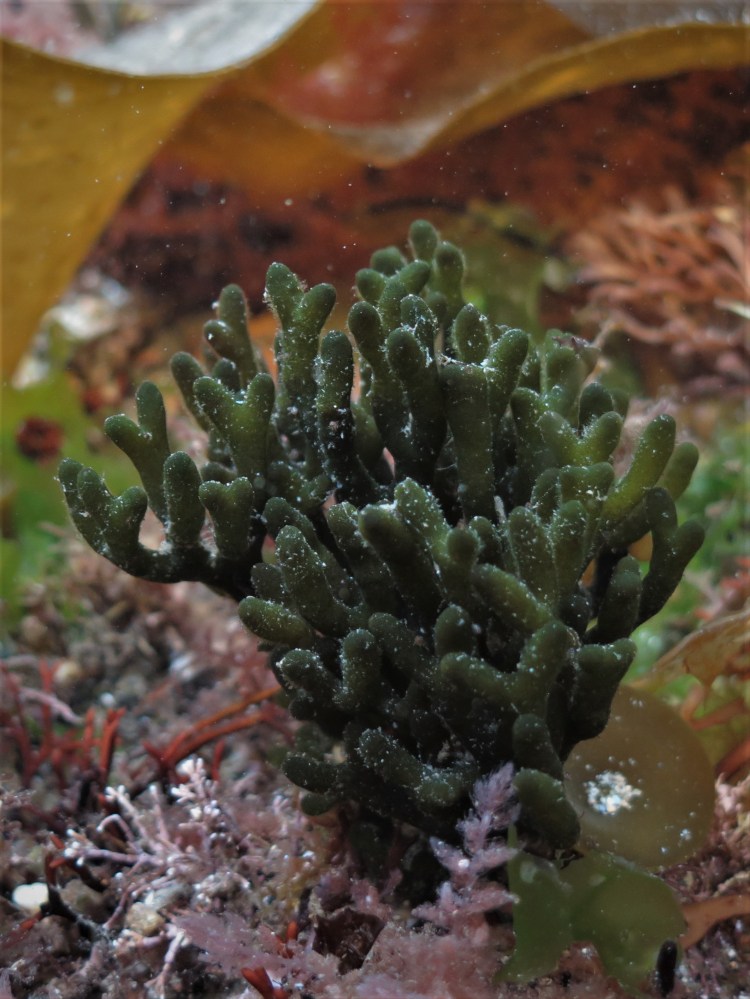
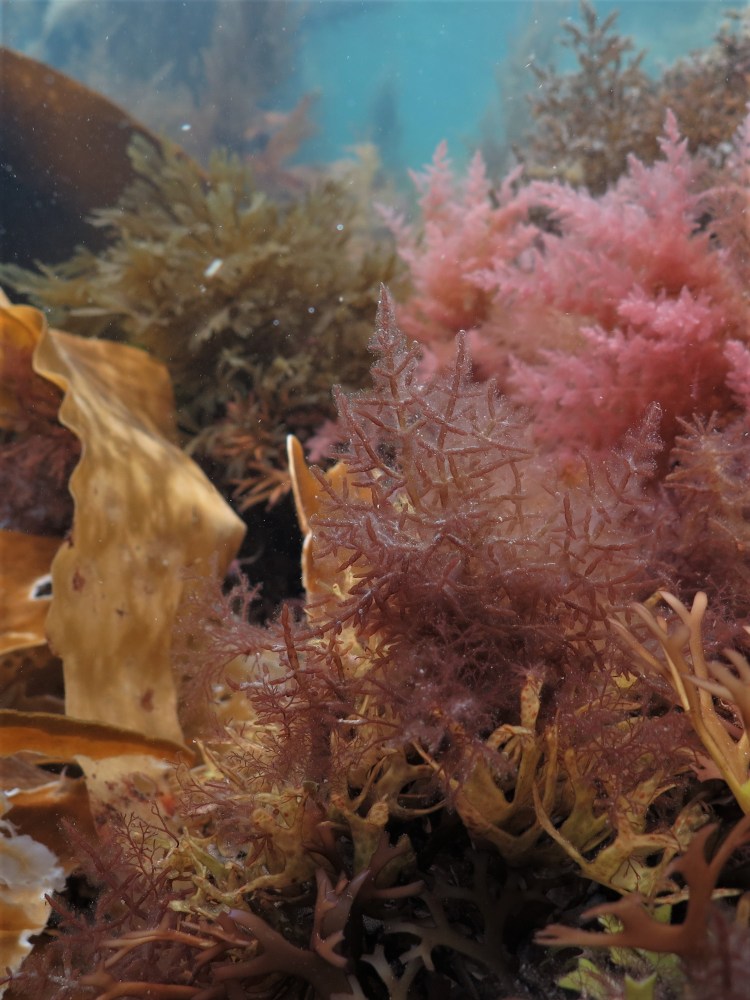
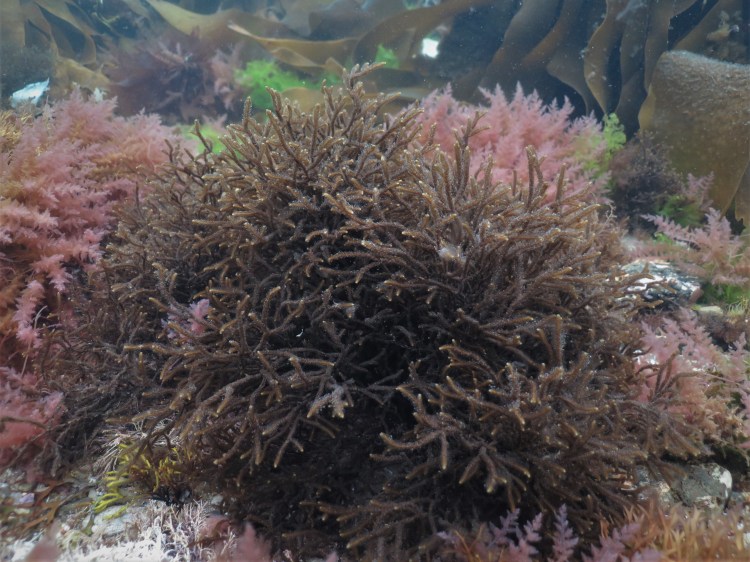



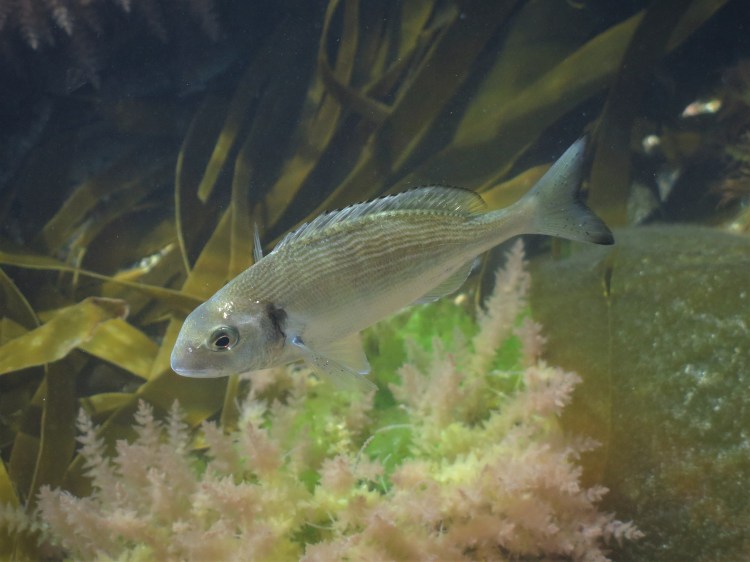
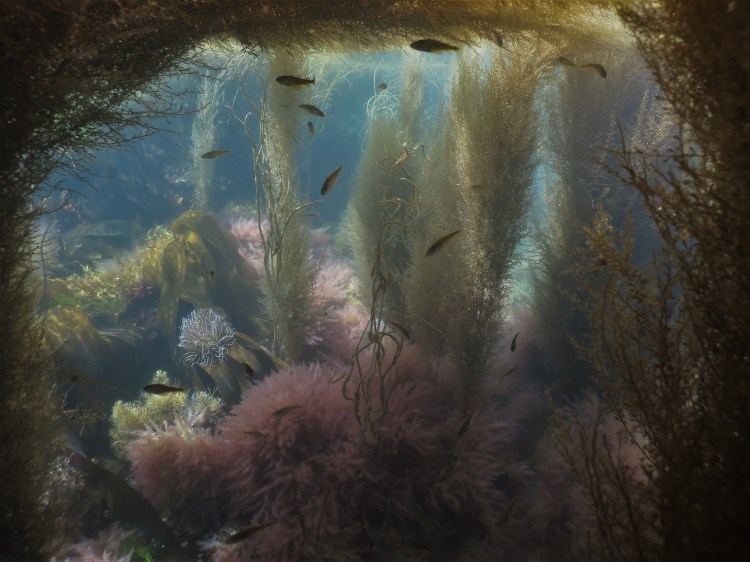


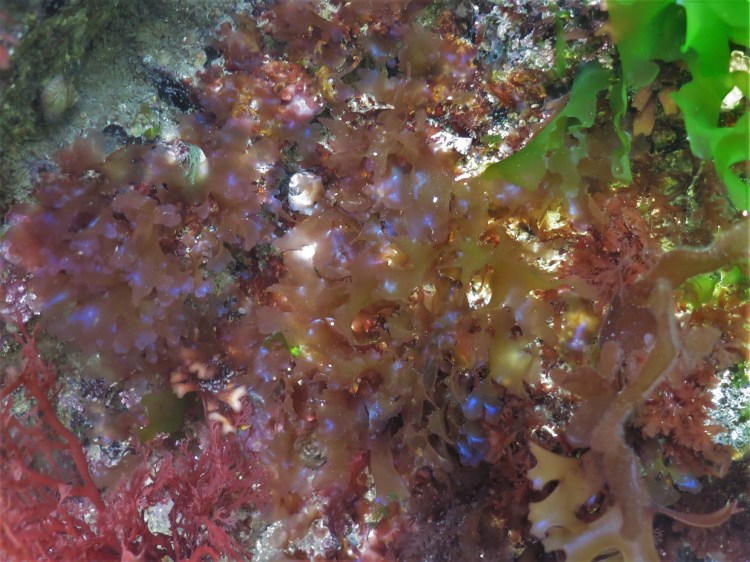
 By the next snorkel session the 19th, the visibility was much better. Some photos of the green seaweed Codium sp., A Gelidium sp. (pulchellum?) and a patch of Slender-beaded coral weed Jania rubens growing epiphytically on Hairy sponge weed Cladostephus spongiosus with the very common species Ulva and Oyster thief Colpomenia peregrina (and others). Next, Beautiful Fan weed Callophyllis laciniata and another Berry wart Cress Sphaerococcus coronopifolius.
By the next snorkel session the 19th, the visibility was much better. Some photos of the green seaweed Codium sp., A Gelidium sp. (pulchellum?) and a patch of Slender-beaded coral weed Jania rubens growing epiphytically on Hairy sponge weed Cladostephus spongiosus with the very common species Ulva and Oyster thief Colpomenia peregrina (and others). Next, Beautiful Fan weed Callophyllis laciniata and another Berry wart Cress Sphaerococcus coronopifolius.
